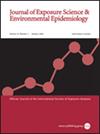Perfluorooctanoic acid serum concentrations and half-lives in a community exposed to contaminated drinking water in New York State
IF 4.7
3区 医学
Q2 ENVIRONMENTAL SCIENCES
Journal of Exposure Science and Environmental Epidemiology
Pub Date : 2025-04-17
DOI:10.1038/s41370-025-00769-z
引用次数: 0
Abstract
Investigations during 2014–2016 in two communities in New York State showed perfluorooctanoic acid (PFOA) in a public system serving 3800 residents (Hoosick Falls) averaging 534 ppt and in a smaller system serving 200 residents (Petersburgh) averaging 92.5 ppt. Bottled water (2015–2016) was provided until filtration brought PFOA levels to non-detectable (2016–2017). The New York State Department of Health (NYSDOH) sought to address community questions about exposures and evaluate reductions in serum concentrations. NYSDOH tested serum PFOA in 2016 just after drinking water exposure mitigation and again in 2018. Descriptive statistics for serum PFOA by sex, age, length of residence, and water consumption were evaluated using multiple regression, and half-lives were estimated. Using the serum PFOA GM and median for tests occurring within 3 months of exposure mitigation (N = 1121) (47.5, 54.2) produced serum to water ratios of 89.0 and 101.6. A total of 1573 Hoosick Falls public water consumers (337

纽约州接触受污染饮用水的社区的全氟辛酸血清浓度和半衰期。
背景:2014-2016年在纽约州两个社区进行的调查显示,服务于3800名居民(Hoosick Falls)的公共系统中全氟辛酸(PFOA)平均含量为534 ppt,服务于200名居民(Petersburgh)的较小系统中全氟辛酸(PFOA)平均含量为92.5 ppt。提供瓶装水(2015-2016年),直到过滤使PFOA水平无法检测(2016-2017年)。目的:纽约州卫生部(NYSDOH)试图解决有关暴露和评估血清浓度降低的社区问题。方法:NYSDOH在饮用水暴露缓解后的2016年和2018年分别检测了血清PFOA。采用多元回归对血清PFOA按性别、年龄、居住时间长短和饮水量进行描述性统计,并估计半衰期。结果:使用血清PFOA GM和3个月内发生的试验中位数(N = 1121)(47.5, 54.2)产生的血清水比为89.0和101.6。影响:该生物监测项目通过提供比较暴露信息和跟踪身体负担减少情况以确认暴露最小化,帮助受pfoa污染的饮用水社区。这些数据对于填补关于全氟辛酸作用方式的知识空白以及开展能够确定与健康风险相关的接触浓度的研究也至关重要。本文所描述的PFOA的详细血清结果被用于构建和验证药代动力学模型,以估计整个生命周期的暴露。这些发现为全氟辛烷磺酸暴露评估提供了基础,这将有利于全国多地点全氟辛烷磺酸健康研究和未来的研究。
本文章由计算机程序翻译,如有差异,请以英文原文为准。
求助全文
约1分钟内获得全文
求助全文
来源期刊
CiteScore
8.90
自引率
6.70%
发文量
93
审稿时长
3 months
期刊介绍:
Journal of Exposure Science and Environmental Epidemiology (JESEE) aims to be the premier and authoritative source of information on advances in exposure science for professionals in a wide range of environmental and public health disciplines.
JESEE publishes original peer-reviewed research presenting significant advances in exposure science and exposure analysis, including development and application of the latest technologies for measuring exposures, and innovative computational approaches for translating novel data streams to characterize and predict exposures. The types of papers published in the research section of JESEE are original research articles, translation studies, and correspondence. Reported results should further understanding of the relationship between environmental exposure and human health, describe evaluated novel exposure science tools, or demonstrate potential of exposure science to enable decisions and actions that promote and protect human health.

 求助内容:
求助内容: 应助结果提醒方式:
应助结果提醒方式:


